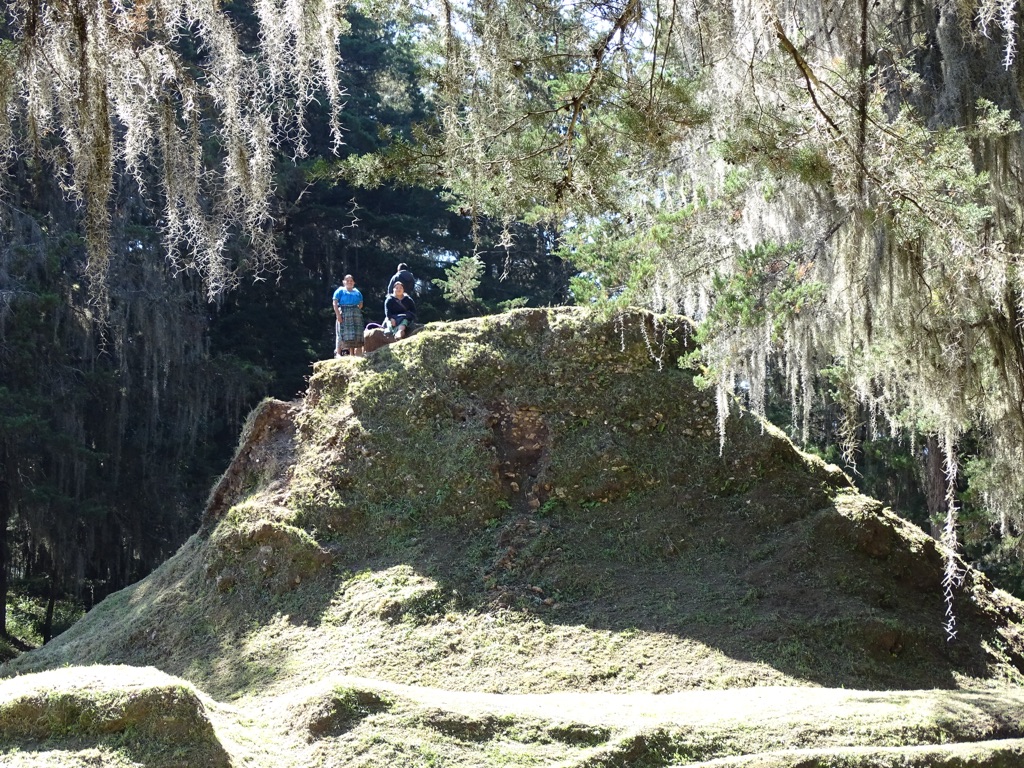K’umarcaaj, once known as Q’umarkaj, is a pre-Columbian Maya archaeological site in the highlands of Guatemala. It served as the capital of the K’iche’ Maya kingdom from the 15th century until it was conquered by the Spanish in the early 16th century. The site is notable for its unique architecture, including palaces, temples, and Mesoamerican ballcourts, which reflect the rich cultural and political history of the K’iche’ Maya. Despite its destruction by the Spanish, K’umarcaaj remains an important site for understanding the pre-Columbian history of the Americas.
Get your dose of History via Email
Historical Background of K’umarcaaj
Archaeologists discovered K’umarcaaj in the 19th century, but the site had been known to locals for centuries. The K’iche’ Maya, a dominant force in the region, built it. They inhabited it until the Spanish conquest. The city was a hub of Maya civilization, witnessing significant historical events, including power struggles and alliances among Maya kingdoms.
The K’iche’ Maya established K’umarcaaj in the 15th century. It quickly became a powerful city-state. The city’s strategic location allowed the K’iche’ to control trade routes and expand their influence. K’umarcaaj was not only a political center but also a religious and cultural hub, hosting numerous ceremonies and rituals.
Spanish conquistadors, led by Pedro de Alvarado, arrived in the region in 1524. They clashed with the K’iche’ in a series of battles. Eventually, the Spanish emerged victorious, leading to the fall of K’umarcaaj. The conquerors destroyed the city, and its ruins lay forgotten until rediscovery centuries later.
After the conquest, the site was abandoned and fell into ruin. Over time, it became overgrown with vegetation. However, the local K’iche’ people never forgot their ancestral capital. They continued to pass down stories and knowledge of the site through generations.
Today, K’umarcaaj is an important archaeological site. It provides insights into the K’iche’ Maya and their way of life. Excavations and research continue to uncover its history. The site has become a place of pilgrimage for modern Maya people, who honor their ancestors and heritage.
About K’umarcaaj
K’umarcaaj was a fortified city featuring a variety of structures. These include palaces, temples, and ballcourts. The buildings were constructed using local stone and lime plaster, showcasing the skill of K’iche’ architects and builders.
The site’s core is formed by a series of plazas surrounded by impressive buildings. Among them is the Temple of Tohil, the patron deity of the K’iche’. This temple was a significant religious structure where ceremonies and sacrifices were performed.
Another notable feature of K’umarcaaj is the ballcourt. It was used for the Mesoamerican ballgame, which had both sporting and ritual significance. The game was often associated with themes of life, death, and the movement of celestial bodies.
The palaces of K’umarcaaj were likely the residences of the elite and ruling classes. They also served as administrative centers. The intricate designs and spacious rooms reflect the wealth and power of the K’iche’ nobility.
Despite the destruction by the Spanish, many of the site’s structures remain identifiable. Archaeologists have worked to stabilize and restore parts of the site. This allows visitors to appreciate the grandeur of K’umarcaaj’s past.
Theories and Interpretations
Several theories exist about the use and significance of K’umarcaaj. Some suggest it was a ceremonial center, while others believe it was a bustling urban hub. The presence of multiple temples indicates a strong religious purpose.
Mysteries still surround K’umarcaaj. For instance, the exact nature of some rituals and ceremonies is not fully understood. Archaeologists must interpret the evidence they find, often relying on historical records like the Popol Vuh, a sacred K’iche’ text.
Dating of the site has been carried out using methods such as radiocarbon dating and stratigraphy. These techniques help establish a timeline for the construction and occupation of K’umarcaaj. They also provide a context for the artifacts discovered.
One theory posits that K’umarcaaj’s layout reflects the Maya cosmology. The alignment of certain structures with celestial bodies supports this idea. This suggests the Maya had advanced knowledge of astronomy.
Interpretations of the site’s history are ongoing. As new discoveries emerge, our understanding of K’umarcaaj continues to evolve. Each finding adds a piece to the puzzle of this ancient Maya capital.
At a glance
Country: Guatemala
Civilization: K’iche’ Maya
Age: 15th century AD

